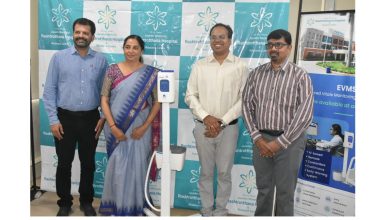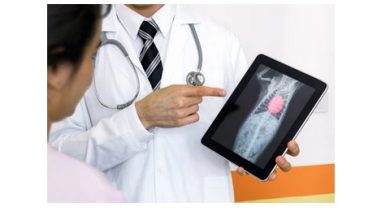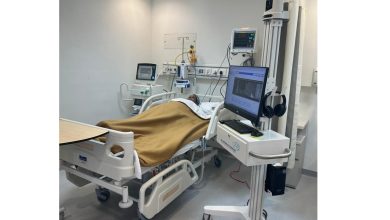How the Internet of Things is Transforming the Healthcare Industry
Tim Sherwood, Vice President, Mobility & IoT Solutions, Tata Communications

In the face of ever-increasing competition and evolving demands of patients in different geographies, healthcare service providers need to innovate and plan for digital transformation. In the developed world, they need to be equipped to treat an increasingly aging population whereas in the developing world, a big challenge still is how to reach more and more people in regions and communities with not enough healthcare staff. Given these varying demands, to stay ahead, more and more healthcare organisations are investigating machine-to-machine communications and the Internet of Things (IoT).
While patients are already used to decentralised treatment centres, self-diagnosis portals and even telemedicine,
The supply chain is changing too, with more and more collaboration across the entire ecosystem to bring down costs, accelerate the digitisation of medical records and introduce more patient-centric treatment models. This brings very real benefits to the quality of patient care, as local practitioners have more up-to-date data on their patients and their conditions at their fingertips, enabling doctors and nurses to make better informed data-led decisions with regards to remedies and patient care. Now the IoT looks set to change the healthcare sector once again. It’s worth investigating the key factors that are going to be crucial during this next evolution.
Healthcare will go global
Health organisations need to take digital transformation on board to extend their services and reach in areas and communities where there aren’t enough healthcare professionals to treat a growing number of increasingly elderly patients. To succeed, they’re going to have to get the right strategy in place, combined with best-in-class infrastructure and information tools.
Large healthcare groups are international, so connectivity services need to be international too. It’s no longer possible to think on a purely domestic basis. To maintain consistent patient care standards across geographies, healthcare providers need a reliable communications network partner that can provide end-to-end mobile and cloud connectivity as well as data management services. Only by offering excellent service both in a domestic setting and across borders can they win and keep new business.
Continuous collaboration and ubiquitous access
Multi-platform collaboration across employees, partners and patients is the next step for healthcare organisations. By giving everyone access to the data and applications they need, wherever and whenever they’re needed, healthcare organisations can boost productivity and drive efficiency.
Let us consider the advances that telemedicine has already introduced. IoT-enabled mHealth solutions could deliver savings of €99 billion in the European Union, so it’s no wonder that healthcare organisations are exploring other new technologies that could bring down treatment costs and make physicians more available for patients.
One trend we’re bound to see is ever-better connectivity, as hospitals and organisations link up their care estate and supply chains to deliver a truly seamless service.
These two areas should be a focus point when looking at ways to harness the opportunities unleashed by IoT. By thinking globally and collaborating across ecosystems, healthcare providers can begin to leverage IoT to more effectively to enhance patient care. In part two of this blog I will look at two other areas that will help transform the healthcare industry.
Connected healthcare experiences for everyone
Today’s connected consumers – and patients – increasingly expect their healthcare provider to offer them a similar digital experience as they are accustomed to when it comes to managing their finances through online banking, or ordering goods online. Patients want real-time data on their health and the ability to communicate with their doctor or nurse whenever, wherever. More and more clinics are already offering appointments via self-service portals, and alerts through simple application-to-person (A2P) messaging to remind patients of their appointment. Given the pervasive nature of SMS, there is scope for healthcare providers to extend the use of A2P messaging to, for example, remind their elderly patients to take their medications too. Furthermore, the increasingly sophisticated nature of IoT-enabled healthcare devices means that we’re only starting to scratch the surface of the potential of remote healthcare provision and monitoring.
However, healthcare organisations don’t simply need to start providing their patients with a seamless experience, they also need to consider how best to interact with partners too. Hospitals, diagnostic labs, consultants, researchers – they should all expect an omni-channel experience to deliver the best possible service. For instance, a hospital porter should be able to identify in-patients and portable medical scanners immediately, all through a mobile app. Furthermore, all parts of the healthcare ecosystem – hospitals, research facilities, pharmaceutical companies, clinics and patients – should be able to communicate and work together more easily, with a more seamless flow of information (with the patient’s consent of course). This is one sector where the customer simply can’t be kept waiting, so reliable connectivity to enable this better communication and information flow is a must-have.
That’s not to say connectivity doesn’t come with its own challenges. Patient data is critical, yet connectivity could introduce a security risk. Organisations may also find it difficult to scale solutions as demand fluctuates. That’s why they have to make sure they’re choosing the right partner for their infrastructure solutions.
Trustworthy and reliable
As they take advantage of digital transformation, healthcare providers are going to have to take positive steps to manage to risk. That means protecting patient records and other data and applications against external threats. It also means ensuring service continuity and zero disruption in the event of a breach: it is not inconceivable that cyber criminals start to target millions of IoT-enabled healthcare devices to stage huge attacks which could put people’s lives at risk.
That is why healthcare organisations need to adopt an adaptive security strategy. This means shifting from an ‘incident response’ mind set to a ‘continuous response’ mind set. Typically, there are four stages in an adaptive security life cycle: preventative, detective, retrospective and predictive. Preventative security is all about blocking attacks before they affect the organisation or make it more difficult for an attacker to wreak havoc, giving the organisation more time to disable the attack in process. The aim of the detective security layer is to reduce the time that attackers spend within the system, limiting the subsequent damage. Retrospective security is like a vaccine that protects you against diseases – it turns intelligence about past attacks into future protection. Predictive security plugs into the external network of threats, monitoring hackers underground to proactively anticipate new attack types.
If the move to new technology sounds risky, staying with the status quo is riskier still. Organisations have a simple choice: move forward, or get left behind.
A healthy transformation
It’s time for healthcare providers to offer a cross-border service, with a global network infrastructure and global connectivity. Only an international partner that offers global mobile network access and connectivity agreements is going to meet the requirements to deliver services such as tele-medicine, remote diagnostics and eHealth services. Harnessing the opportunities unleashed by the IoT can help to boost efficiency and productivity, and ensure that organisations stay competitive. By enhancing the patient experience, healthcare providers will enhance their reputation too.




